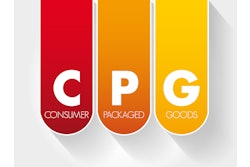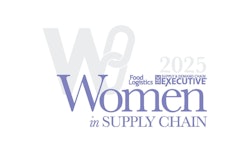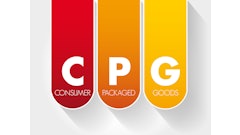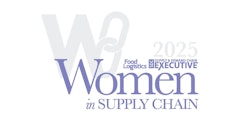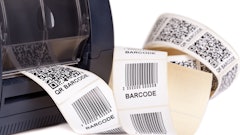
When manufacturers focus on sustainability, their attention often falls on reducing the use of raw materials and energy, sustainable packaging materials, and lowering emissions. According to a Morgan Stanley Report, 88% of companies view sustainability as a potential driver of long-term value, therefore putting more concern around how to be sustainable.
There’s one area that manufacturers tend to overlook: labeling. Labels play a role in reducing waste, improving traceability, and enabling smarter, greener operations. Labels are more than a compliance requirement, but a driving force for sustainability.
Here’s how print automation, 2D barcodes, centralized label management, and on-demand labeling can help manufacturers meet their sustainability goals.
Labeling methods that can help reduce waste and rework for manufacturers
In manufacturing, labeling errors don’t just waste label stock, they create scrap finished goods, require rework, and delay shipments. For the manufacturing supply chain, a labeling mistake can result in mislabeled pallets, misplaced inventory, and costly returns that disrupt everyday operations.
How can manufacturers get a quick sustainability win? One way is by using print automation. Print automation is an impactful way to reduce wasted resources in a labeling process.
Automation software is a technology that runs in the background and connects to existing business systems (ERP, WMS, or any other). Based on company’s unique needs, print automation software waits for a trigger from the business system, the trigger could be a new database record or an exported file, then the software reads the request and prints the required labels with the proper data, all without any human interactions.
With print automation, manufacturers can have fewer misprints, which means fewer resources wasted on paper, ink, and energy, turning process accuracy into measurable environmental gains across the entire supply chain.
Two more methods include:
On-demand label printing
On-demand label printing eliminates the need to rely on a vendor for pre-printed labels. Instead, employees use label design software to create and print the labels when you need them. Branding, artwork, and regulatory changes can be made quickly, so production can continue without waiting for new labels to arrive. This is an advantage when launching new or updated products, including re-releasing products with more eco-friendly ingredients or switching to recyclable or compostable packaging.
Dynamic label templates
Eliminate manual data entry from your labeling process by creating dynamic label templates with variable fields connected to data sources. Some examples include:
· Database connections: Connect label fields to columns in a business spreadsheet or database to populate accurate, real-time data on the label.
· Data and time stamps: Set date and time stamps to automatically populate the current date and time or add an offset for expiration dates. Define the precise format to use, eliminating inconsistent date formats across labels.
· When printed fields with data validation: When manual data entry is unavoidable at print time, use data validation to ensure it is properly entered. Set character limits, require only numbers, automatically add prefixes or suffixes, and more.
How 2D barcodes support efficiency
Manufacturers often face the challenge of including multiple languages, regulatory information, or recycling instructions on product labels. Using 2D barcodes, like QR codes, allows manufacturers to condense all required information into a compact label, reducing the need for larger packaging.
This approach lowers material usage while increasing transparency. Consumers, supply chain partners, and compliance teams can scan the QR codes to access detailed information on product origin, handling, or sustainability practices.
2D barcodes can also improve operational efficiency. They enable real-time inventory tracking, helping reduce overproduction and minimize excess stock. Additionally, 2D barcodes streamline logistics by providing clear product location and handling instructions, reducing transportation errors and waste.
On-demand labeling: Reducing overproduction
Overproduction in manufacturing not only wastes materials and increases storage and disposal cost of over-produced products, it also negatively affects companies' overall sustainability goals.
When companies use on-demand labeling practices, they can reduce the overproduction of labels, avoid storing obsolete rolls of labels, and ensure the most current regulatory or branding information is applied to products.
Companies can integrate their labeling with an ERP or WMS system to allow them to print labels exactly when they need them. By printing only what is required, companies cut material waste, lower energy use, and streamline operations. This approach also makes it easier to adapt to packaging changes, label modifications, or updates to sustainability certifications, keeping labeling aligned with environmental goals.
Sustainable centralized label management
Sustainability and efficiency go hand-in-hand, and the ultimate way to bring efficiency to a labeling environment is to leverage a centralized label management system. Below are three ways the efficiency of a centralized labeling system can support organization’s sustainability goals:
· Consolidation and standardization of labeling software is the first step to an efficient labeling system. A centralized label management system eliminates the need for individual local software installations at each location and workstation. This saves IT teams time and energy.
· A centralized label management system can be enabled in the cloud, reducing the need for on-site hardware. You can reallocate space in your server room to more value-added resources.
· On-site servers use a lot of electricity and generate a lot of heat, requiring more energy to cool them down. Reducing servers can have a real impact on your company’s carbon footprint.
Centralized label management software incorporates the benefits of advanced label design, print automation, and traceability software, making it a great option for companies trying to reach their sustainability goals.
Select a labeling provider that can meet company’s sustainability goals
As sustainable manufacturing continues to evolve and new technologies are released, one thing can stay the same and that is implementing a reliable, sustainable labeling system. Selecting a labeling provider that can help you take small steps towards sustainable barcode labeling can have a big impact on your company’s overall sustainability initiatives.





